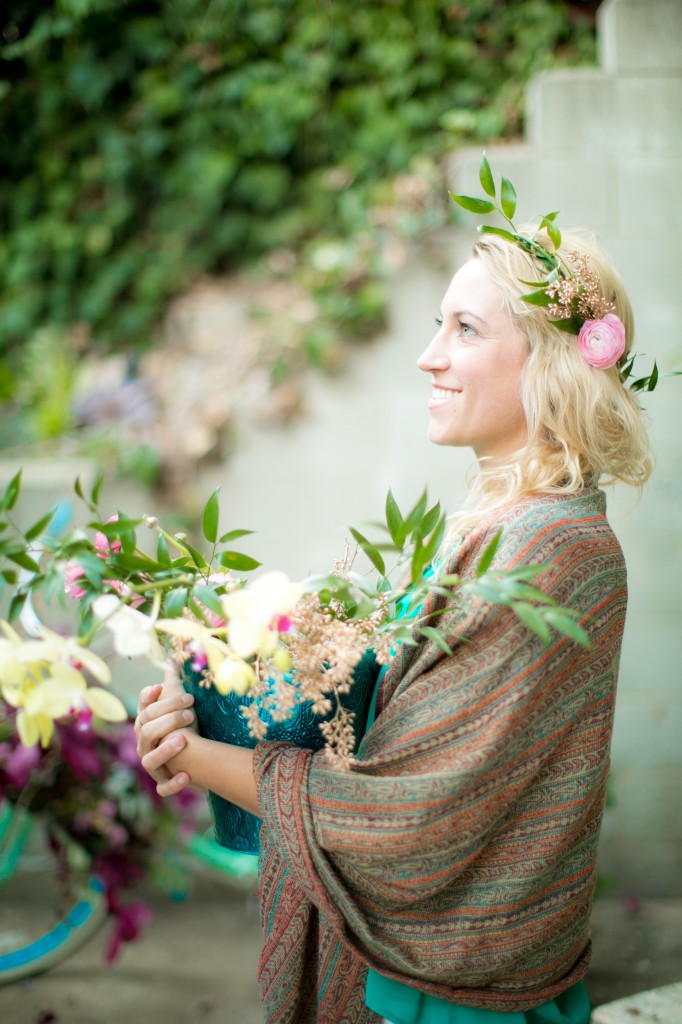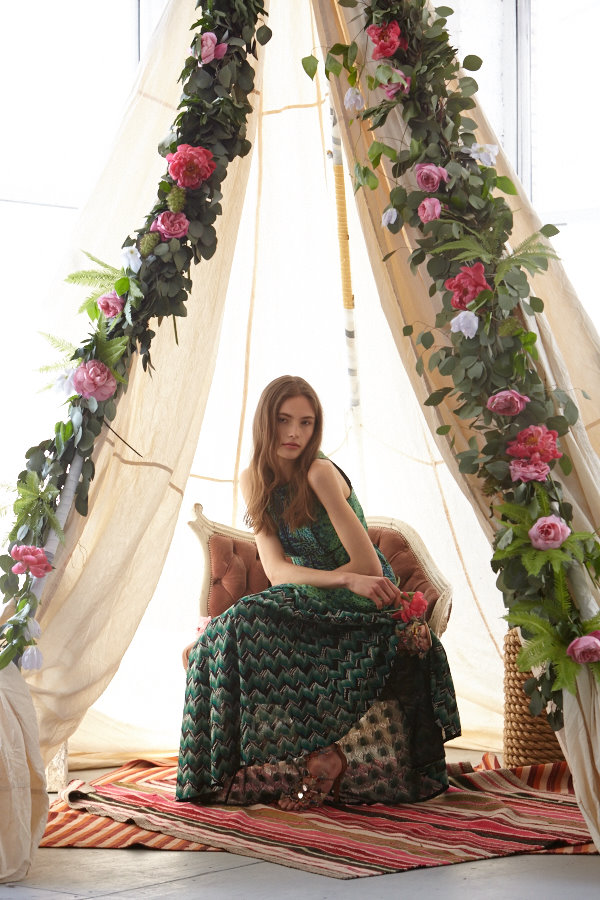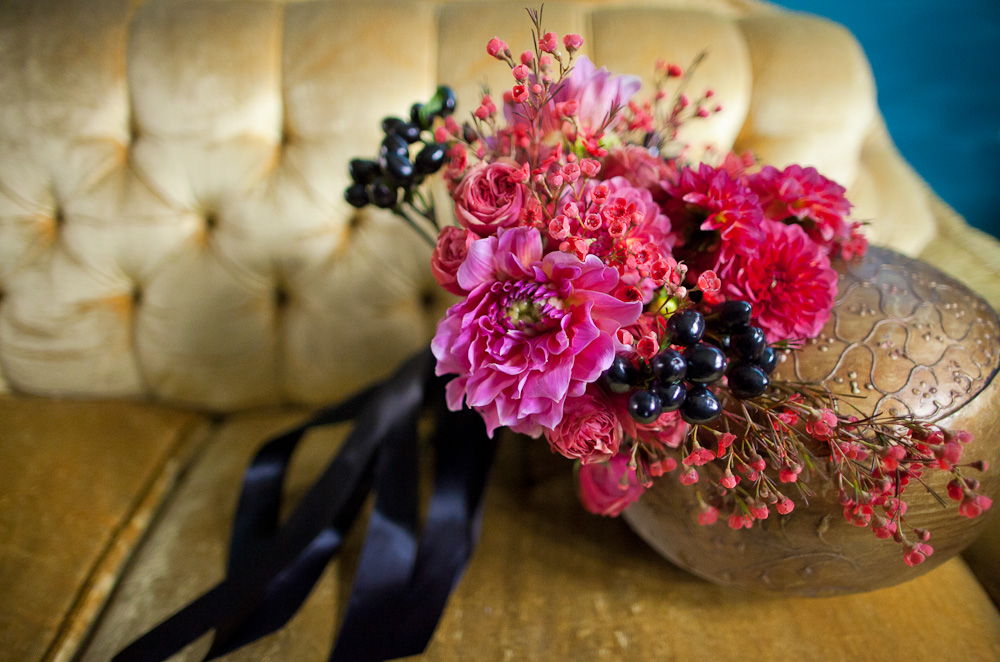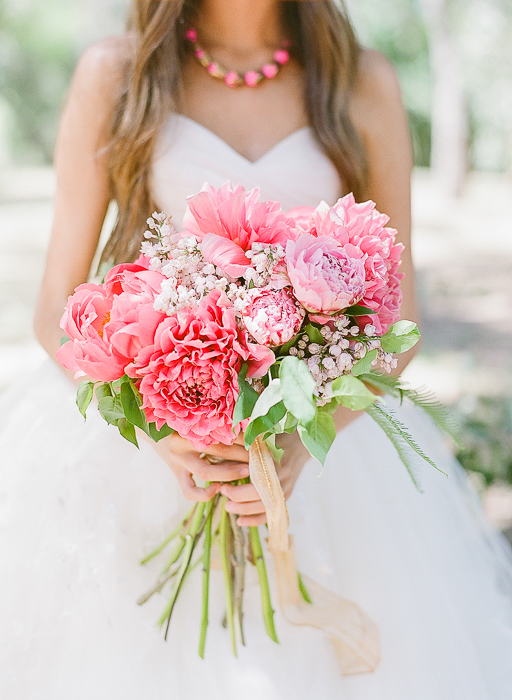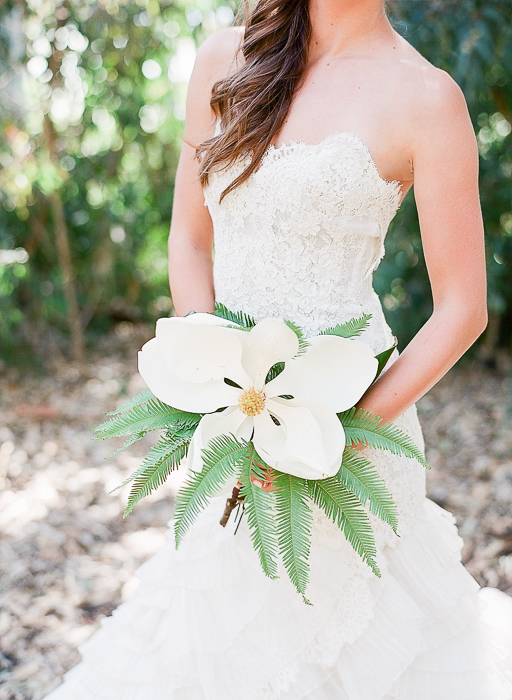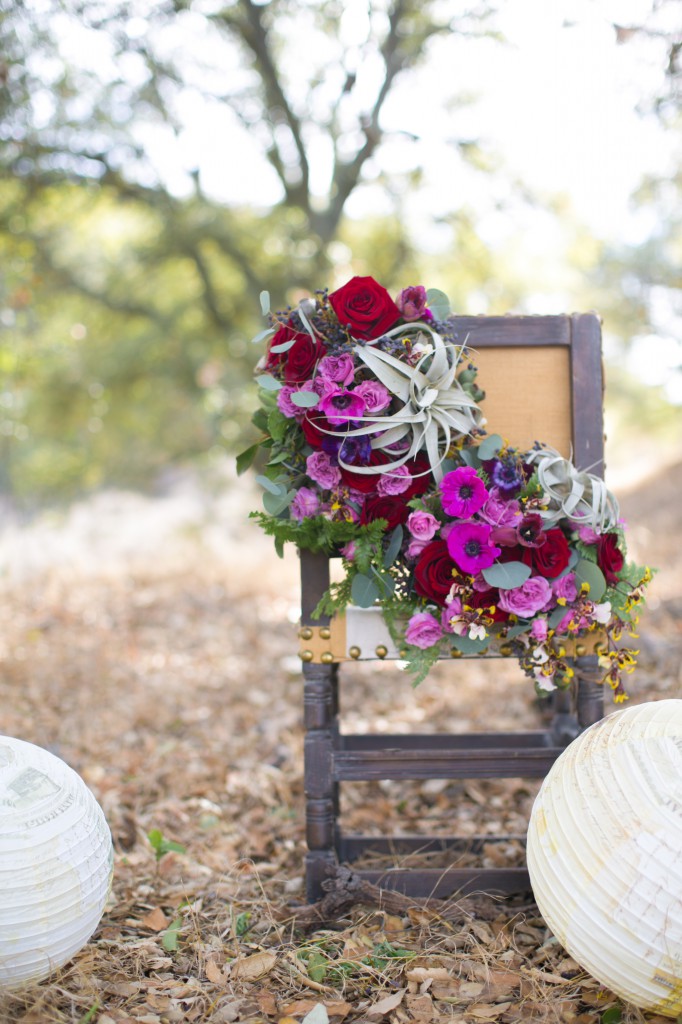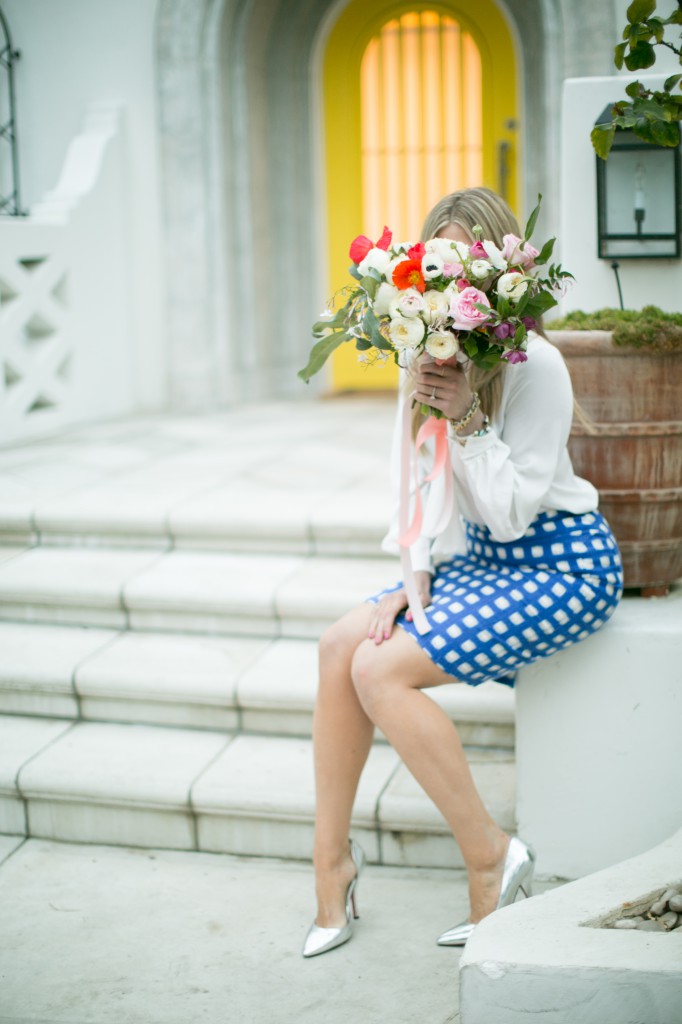SLOW FLOWERS Podcast: A new brand of floral entrepreneur, Bess Wyrick of Celadon & Celery (Episode 149)
July 9th, 2014
Podcast: Play in new window | Download
Subscribe: Apple Podcasts | Google Podcasts | Podcast Index | RSS | More
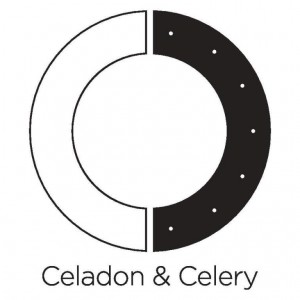 Today’s guest is Bess Wyrick, founder and creative director of Celadon & Celery, a floral design and events studio based in New York City and Los Angeles.
Today’s guest is Bess Wyrick, founder and creative director of Celadon & Celery, a floral design and events studio based in New York City and Los Angeles.
I first learned of Bess when researching florists to possibly feature in The 50 Mile Bouquet – I wanted to document the emerging business model of floral designers who actively promoted green practices, such as using seasonal and local flowers, embracing earth-friendly products and promoting anti-mass market style.
I later learned that this category is called “eco-couture,” and it’s quite possible that Bess coined the phrase herself.
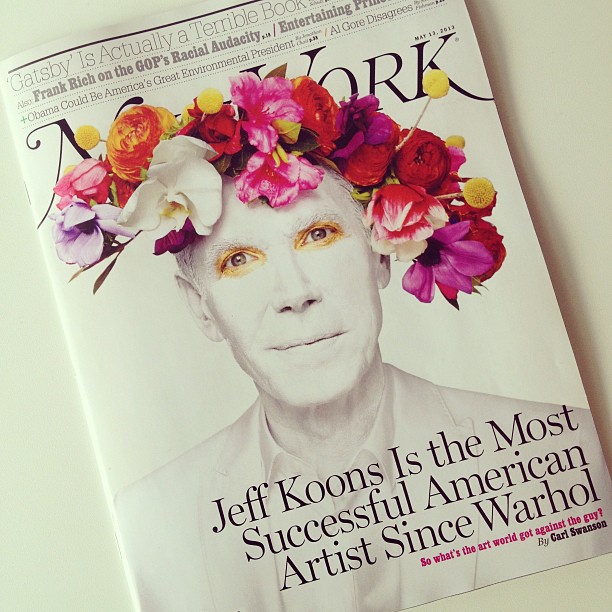
May 5, 2013 cover of New York Magazine, featuring Bess Wyrick’s floral crown on the head of artist Jeffrey Koons.
In 2009, Bess’s Celadon & Celery was featured in a New York Times‘ blog post about “organic flower” sourcing. The writer cited Bess’s policy of sourcing flowers within a 200-mile radius of NYC and also noted that when seasonal flowers aren’t available, she purchased Fair Trade, Veriflora and USDA organic flowers from certified vendors.
The following year, in 2010, BizBash, a web site devoted to event planning, published a piece about Celadon & Celery that stated: “. . . sustainability is important to Wyrick. She composts, grows many of her own plants in her Chelsea studio, sources flowers from local growers or certified organic suppliers, and scavenges for materials to repurpose.”
To read about that philosophy today – in 2015 – doesn’t seem all that unusual. But five years ago, it was rare. Believe me, I counted on one hand the number of designers proactively taking the green approach. I saved that article in my folder of inspiring designers.
So how cool was it that when Celadon & Celery brought its floral design workshop series to Los Angeles, Bess’s publicist pitched me to write the story.
I was definitely intrigued. Intimate hands-on floral design workshops had hit the East Coast, and the New York Times had run a piece in 2010 about The Little Flower School of Brooklyn (and owners Sarah Ryhanen and Nicolette Owen, two recent guests of this podcast). I’d even led a few seasonal floral workshops for Ravenna Gardens in Seattle in 2010, but I hadn’t seen much like this happening elsewhere on the West Coast.
My editor at the Los Angeles Times agreed, and I did a short Q&A interview with Bess about the workshop series in fall 2011. At the time, Celadon & Celery was charging $300 for its two-hour sustainable-design workshops at Bess’s loft-studio in New York’s Chelsea Flower District. For the Los Angeles expansion, she dropped the tuition to $125 and used social media channels to promote the classes.
Overwhelmed by the positive response, Bess rented a photography studio in downtown Los Angeles and turned it into a classroom. She hired a few local freelancers to help and ran three classes a day for three weeks. “In that time we taught floral design to more than 800 people,” Bess marvels.
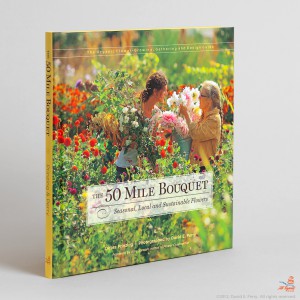 I was able to witness the excitement in person and cover it for a chapter in The 50 Mile Bouquet. In the book’s pages, you can read about the explosion of DIY interest in floral design.
I was able to witness the excitement in person and cover it for a chapter in The 50 Mile Bouquet. In the book’s pages, you can read about the explosion of DIY interest in floral design.
In that piece, Bess offered this observation: “The word ‘eco’ has a bad reputation implying something weedy,” Bess says. “But we’re creating flowers that are sophisticated, chic and tailored. ” You can read the entire chapter by clicking this link.
I’ve connected with Bess many times since the publication of The 50 Mile Bouquet, in both New York and Los Angeles, depending on where our travels intersect. She is a generous supporter of the new Slowflowers.com and you can find Celadon & Celery featured in the online directory under studio florists and weddings/events.
I’ve been wanting to have her on as a guest and I’m delighted to include our conversation here today. Please enjoy our discussion about how floral design – and this designer in particular – has evolved to encompass event production, conceptual storytelling and artistic installations.
You’ll learn that floral design can be as multidisciplinary and multidimensional as you choose it to be. And, according to Bess, florists who advocate for their vendors, the family flower farm in particular, have an edge. She says: “I like to sell the fact that I’m a luxury brand and luxury brands work with really small artisans and that’s really important because you want to make sure that your flower farm vendors keep doing what they’re doing and creating unique and unusual flowers that the higher luxury market will pay for.”
I love how generous and frank she is and a few more of her interview comments really resonated:
For one thing, volunteering on flower farms has educated Bess to understand that “it’s not okay for clients to negotiate the cost of flowers because it is back-breaking work and there aren’t enough people who know how to grow flowers.”
And second: This quote is powerful and I hope it more than a few people in the floral industry to rethink their practices: “I don’t think that any florist in California should be importing flowers at all. That’s just being lazy.”
Ahem. Thank you, Bess, for stating the obvious. You’ve lent a lot of credibility to the Slow Flowers Movement with that proclamation!
Here are links to all of Bess’s social outlets:
And Thanks to listeners like you, this podcast has been downloaded nearly 15,000 times.
If you like what you hear, please consider logging onto Itunes and posting a listener review.
Until next week please join me in putting more American grown flowers on the table, one vase at a time.
The Slow Flowers podcast is engineered and edited by Hannah Holtgeerts and Andrew Wheatley. Learn more about their work at hhcreates.net.









